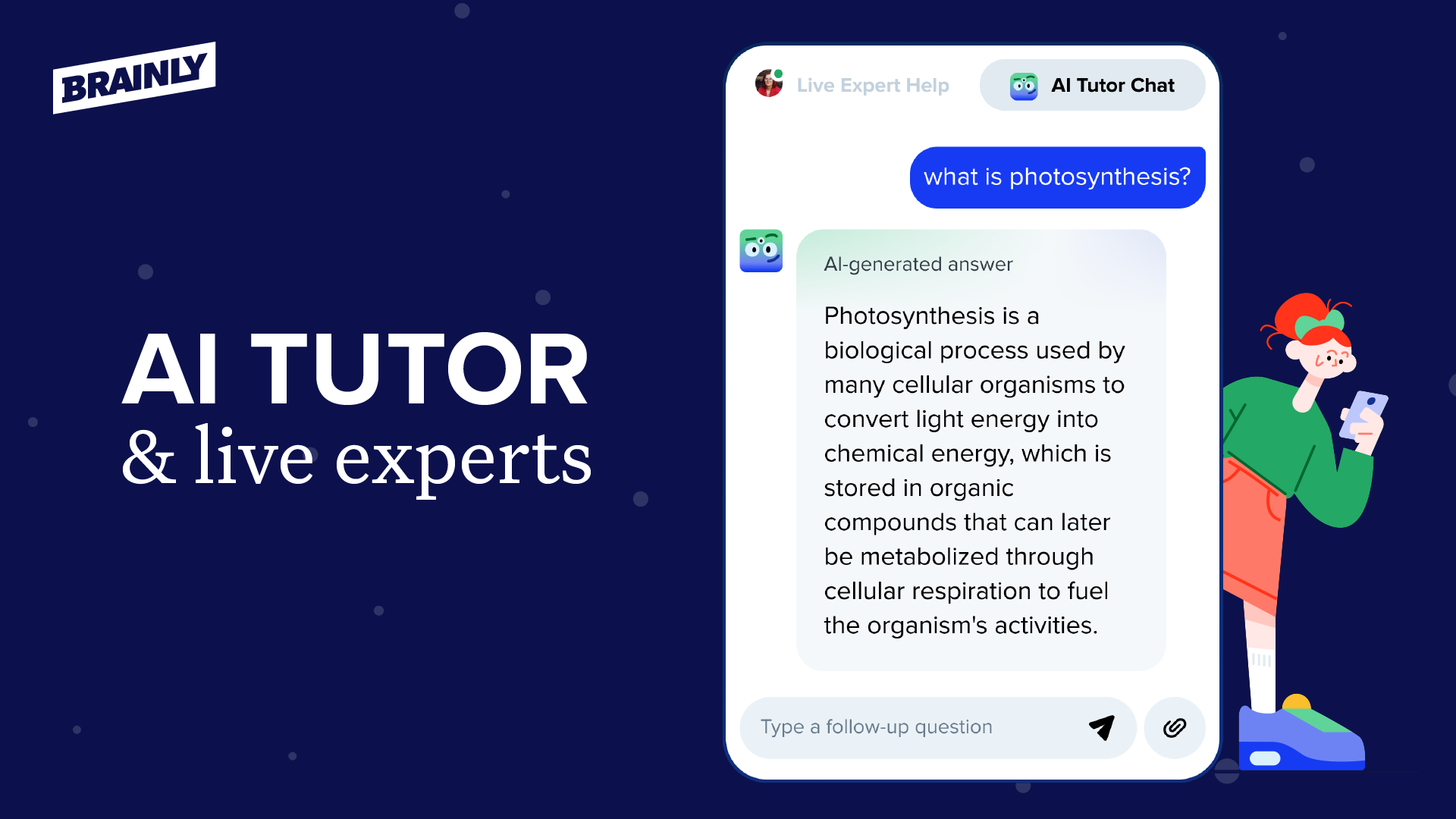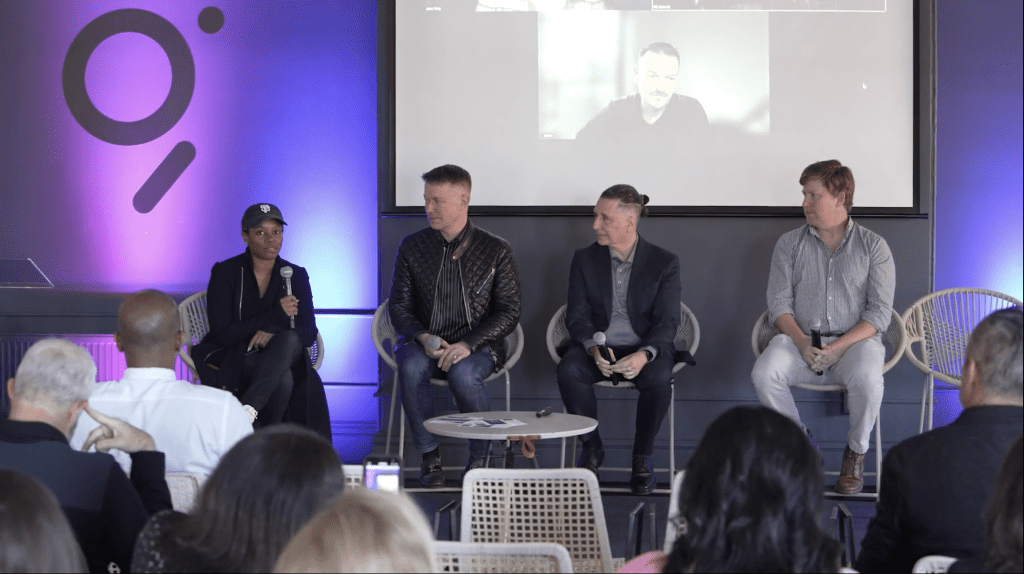Brainly: AI-powered app helps students make the grade
Primary education in the U.S. is in dire straits. USA Today reported that today’s K-12 students were possibly a grade behind in learning. Furthermore, U.S. reading and math scores were at an all-time low.
Pre-COVID, teacher shortages were rampant throughout the U.S. Those that stayed? They battled extreme burnout. Low pay in some regions of the country requires teachers to take on two jobs to stay afloat financially.
Then COVID unleashed remote learning.
The education landscape is still unsettled. Absenteeism is at an all-time high. U.S. students are falling behind. Teachers are quitting in record numbers.
Brainly knew AI could be a solution for both students and teachers. Its worldwide app for community-based homework help can level the educational playing field. It could also help overburdened teachers.
Challenge
Brainly was gearing up to launch its AI-powered features that provide academic help where and when students need it. Its AI-powered app could be an always-on tutor that students worldwide could access regardless of their income.
This could help overburdened teachers also. However, with AI in education relatively new, many teachers and school administrators did not understand the technology – let alone how it can work in an academic setting. Fears were stoked in the media with headlines like “Will AI Replace Teachers In The Future?”
We anticipated the negatives of AI in education and positioned Brainly’s AI tools as the bridge to educational excellence.
But we needed data to validate the need for their upcoming product launch.
First, we needed to find out how students were interacting with AI and how they used AI to support their day-to-day education.
Were they already using AI? Did they trust AI? Was AI providing the right support to further their subject matter understanding?
Once we had our insights, we had to establish why Brainly’s AI-powered tools should be the go-to resource for any homework help.
Our “2023 Student AI Report: Exploring Perspectives on AI in Education” assessed AI’s impact on students and their learning experience. Results proved students’ desire for AI tools better aligned with the learning process, resulting in improved academic outcomes.
Students believe that AI can be a valuable aid in understanding complex concepts and providing explanations. Most students (62.2%) confirm that AI bots have helped explain their answers, suggesting that AI can complement and enhance traditional teaching methods.
But what about the teachers?
We needed to gain footing with teachers by underscoring the benefits AI can bring both in and out of the classroom.
Strategy
PR developed a two-prong strategic approach:
First, we positioned Brainly’s AI-powered tools as a solution to help reduce the gap in learning, leveraging students’ desire to do well in school. We highlighted Brainly as a student support tool for personalized learning, helping the many struggling with homework.
We surveyed middle and high schoolers to learn which school subjects they struggled with the most, the average amount of homework nightly and if they planned to seek outside support for homework.
Results confirmed math was the top subject for homework help – with nearly 80% of students needing help.
We leveraged this information – coupled with our insights into declining scores in reading and math – to underscore the personalized and accessible learning provided by Brainly’s new AI-powered tools. We leveraged survey results to support awareness moments to build brand affinity and recognition.
Secondly, we recognized teachers had reservations. They were afraid AI tools would be used for cheating. They also feared that AI tools would replace them.
Amid chatter about AI replacing teachers, given the shortages and budget reductions, we kept our messaging on the benefits the technology would bring. We leveraged relationships with educators to help spread the word about the benefits of AI, such as assisting with lesson planning, grading, test development and more, so they could focus more on teaching students and developing strong teacher-student relationships.
We fostered relationships with the media to establish Bill Salak, CTO of Brainly, as a go-to source for consumer and edtech industry stories. With over two decades of experience in the edtech industry, Bill advocates for using AI to level the playing field and give every student access to the personalized instruction that will help them get the best outcomes.
We leaned into topical news – including AI in education, state math scores and cell phone bans in schools – which provided an organic moment to insert Brainly into the media’s stream of conversation.
Campaign Results
Leading up to the launch of Brainly’s new AI-powered tools, PR secured a national interview for Bill with FOX News about ChatGPT’s role in the classroom. Reporter Eben Brown titled the story: “AI advocates say there’s a place for apps like Chat GPT, Google Bard in classrooms.”
Bill’s insights on how AI can lead to better student outcomes and help students individually drove over four dozen airings with FOX affiliates throughout the country, generating a UMV of over 117 million.
We then secured a follow-up report from CB Cotton of FOX News: “A new AI-powered tech tool is fighting the ‘summer slump,’” which resulted in a total of 86 placements and a UMV of over 54 million.
Our pitch to Lexi Lonas of The Hill about the race to the AI market among top education companies featured thought-provoking commentary from Bill. “Education companies race to the AI market” was picked up by over four dozen local dailies, resulting in a total UMV of 228,430,722
We placed Bill’s byline, “Will AI-enabled Tech be the Great Classroom Equalizer?” with EdTech Digest, an outlet reaching educators and focused on creating better education for students.
We integrated a steady stream of newsjacking initiatives into our PR program, driving top-tier coverage on a range of topics that helped forward Brainly’s mission. We leaned into coverage around Math Test Scores Remain Low for US, weaving Brainly into this conversation which was getting extensive media play. Again, our newsjacking paid off, securing interest from Ray Ravaglia, a contributing editor at Forbes, who published “Brainly Evolving From Questions And Answers To AI Learning Companion.”
Additional newsjacking initiatives around AI literacy (61 placements; UMV of 54,424,729), career preparedness in the AI era (55 placements; UMV of 47,930,401) and schools implementing cell phone bans (45 placements, UMV 506, 400,084) captured a whopping 161 placements and 663 million UMVs.
Our efforts grew students’ use of the technology from its being used a few million times to 19 million – an increase in the user base and a reflection of the platform’s importance in providing homework help.
Now, Brainly’s user base is 250 million and it’s the number one app for homework help.
And it’s helping students achieve those better outcomes.



